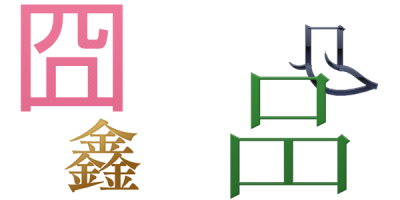
An exchange student from Thailand told me that Arashi, an all-male pop group, held a press conference on April 20 for their new television show, Arashi ni Shiyagare (thanks to Mz. Chonwattana Chawanrat for this information). It appears that the members of Arashi will not be informed of which guests will appear on their show until the day of the program. When asked, “Who would make you the most nervous if they appeared as a guest?” Sho Sakurai, one of the group’s members, answered as follows.
For me, it would be Mr. Murao. I’ve only ever met him in press situations, so it’d be kind of awkward for him to see me yelling “Aha!!” on this show.
The Murao he refers to is a professor at Kwansei Gakuin University and the main newscaster for the program News Zero. On Mondays Sakurai also appears as a newscaster on News Zero, and always interacts with Murao in a serious manner. On the program Arashi ni Shiyagare, Sakurai is not his usual, serious self. He clowns around and yells “Aha!!” Faced with Matsuo, he would not be comfortable just saying: “Ah, hello. Thanks for all you’ve done for me on News Zero. On that show, we do news, so I always adopt a serious style, but as this is a variety show, I use a boisterous style and sometime yell ‘Aha!!’ Please do the same, Mr. Matsuo. Aha――!!” Sakurai says it would be “kind of awkward” to have Matsuo as a guest.
This indicates that his intentional switching between the serious demeanor for News Zero, and the Aha!! demeanor does not occur on the level of “style.” If it did, it would be no problem. The thing he is changing doesn’t, ostensibly mustn’t, change, but in fact he changes it frequently. If this change is detected, he feels uncomfortable. In short, the change is happening on the level of “character.”
Tsukiji Komachi no Osakana Saijiki is a long-running serial, having over 200 episodes, that is carried in the weekly magazine Sunday Mainichi. In the series, Asada Naoko, who works at the Asada Suisan fish shop in Tsukiji(1), explains the ecology and ways of preparing various seasonal fish. If one reads this series, which has earned the nickname “Tukiji Komachi” (over the vigorous protestations of the author), one has trouble reconciling the fact that it is written by a young, beautiful woman.
(…) It was a gymnast, you see, who did it! (Datte, taisoo senshu ga yatte tan da mooon.) Alright! (Osshaaa!) Today slime flounder is on the menu. Its plump lips are kind of sexy (sekushii desu na). The front of its body is covered with a lot of slime. Because of its dirty, filthy appearance, it’s sometimes called babakarei (granny flounder). How rude (shitsuree desu na). Compared with other kinds of flounder, it’s moister and smoother (kime ga komakai no desu zo).
When cooking it, the hardest part is getting the slime off. It would take a long time to do it with a knife, so I use metal scrub brush (kanatawashi o tsukau no da). You can steam slime flounder, but it’s probably best boiled (niru no ga ichiban ii deshoo). It will make you realize how delicious boiled fish can be!
[Episode 48, “Karei” Sunday Mainichi, Feb. 11, 2007: No. 86, Vol. 6, Mainichi Newspapers p.37.]
She goes through a dizzying, range of characters, from a spoiled “young lady” (yatte tan da mooon), to a fired up “sports competition” mood (Osshaaa!), to a humorous “refined” “superior” “elderly” “male” character (“sekushii desu na,” “shitsuree desu na” and “kime ga komakai no desu zo”), and then sometimes goes to a more conversational tone (“tsukau no da” and “ii deshoo”).
This sort of example, which probably cannot be explained without using the idea of “character,” can be seen in very recent video and literature too. However, I can’t use those very often in this series.
(To be continued)
* * *









(1) An area of Tokyo which is famous for its fish market.